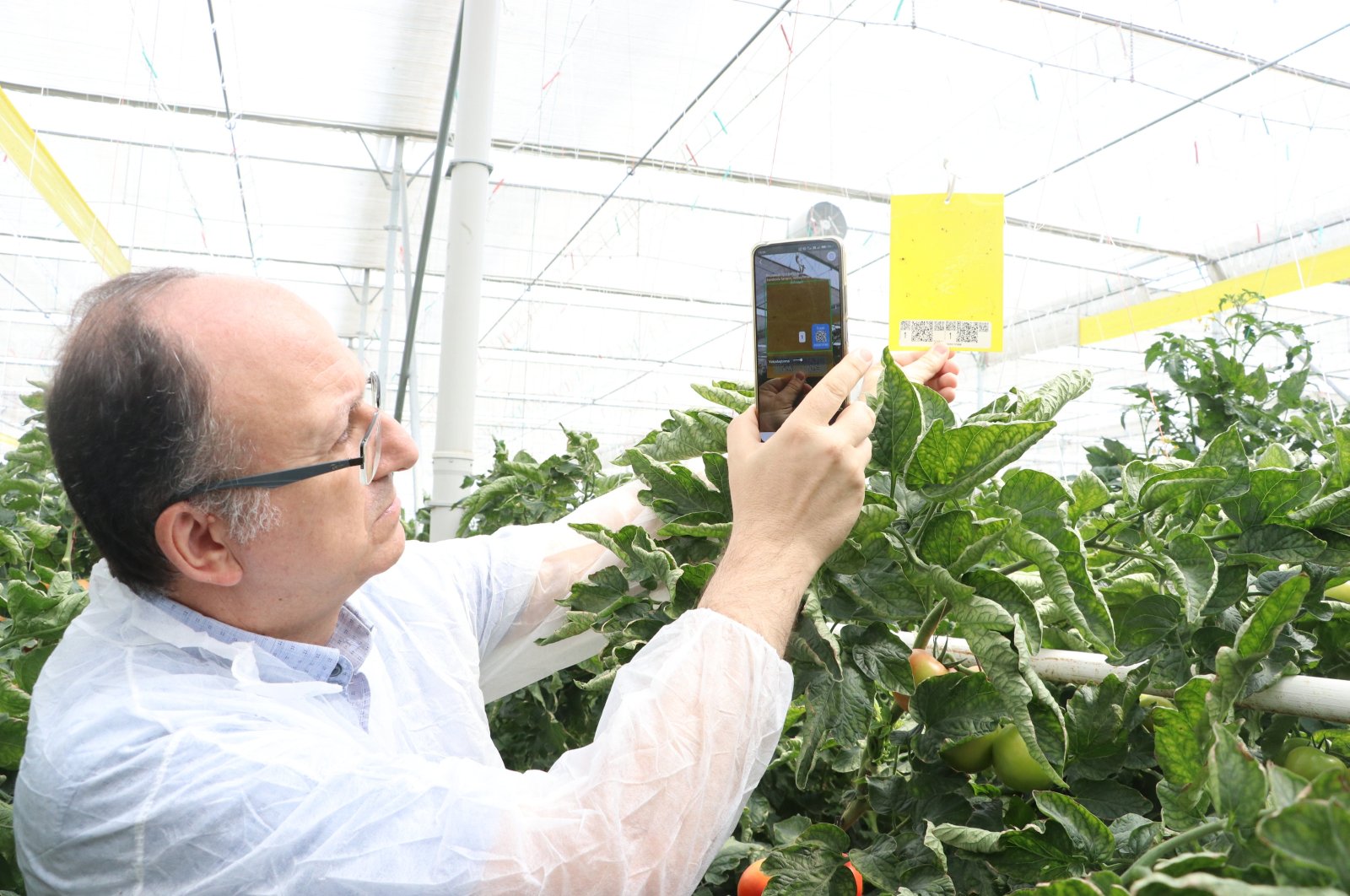
In Kayseri, an artificial intelligence developed by professors Handan Altınok and Alper Altınok, faculty members at the Faculty of Agriculture at Erciyes University, detects agricultural diseases and pests, thus preventing unnecessary pesticide use.
The academic couple researching soilless agriculture has developed an AI system named "Bugmapper." Operating via a web interface, the system is specifically designed to monitor diseases and pests in greenhouse areas, such as tomato moths, thrips and whiteflies, combatting them with AI and tracking their progress. As pests attack plants, they adhere to smart traps installed inside greenhouses, supported by the mobile application uploaded by producers to their phones.
Through detailed examinations facilitated by artificial intelligence on data transferred from the device to cloud environments, pests in traps are counted and mapped out by categorizing them into groups. Subsequently, targeted pesticide applications can be implemented regionally without spreading to other crops, thus curbing excessive agricultural pesticide use.
The academic couple received substantial support of nearly TL 900,000 ($27,590) from the Scientific and Technological Research Council of Türkiye (TÜBİTAK) to develop their project at Erciyes Technopark.
Handan Altınok, head of the Plant Protection Department at Erciyes University's Faculty of Agriculture, told Anadolu Agency that the AI-based system supports safer food production by minimizing chemical residue risks through effective pest control.
Highlighting the system's importance for producers in terms of disease and pest monitoring, along with planning for their control, Altınok stated: "Our 'plant protection decision support system,' backed by TÜBİTAK, ensures precise disease and pest control, reducing chemical residues and enhancing food safety. Implemented across Kayseri, Yozgat, Afyon and Mersin, it achieves 30%-50% seasonal savings in chemical use in geothermal, soil-based and soilless greenhouses."
Pest detection in 10 seconds
Alper Altınok emphasized the importance of detecting and preventing the spread of problems locally within the field, stating: "Our system operates independently of greenhouse infrastructure, using only a mobile phone and associated app. We also employ a portable, shoulder-carried device to read developed traps. This setup allows single field personnel to collect detailed disease and pest data, which is instantly transmitted online."
"Pests are tracked using efficient traps. While visual counting in sticky traps is labor-intensive, taking 5-10 minutes per trap, our system completes all tasks in just 10 seconds per trap. Data is then presented via our AI-based web app, including graphs on pest spread, risk trends and color-coded maps, aiding producers in effective control strategy planning," he added.
